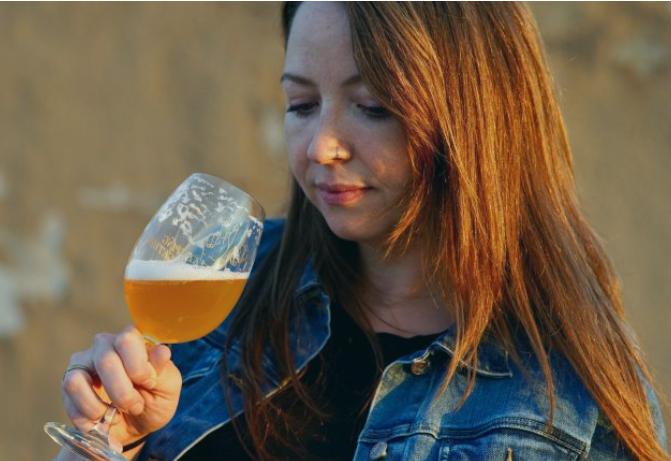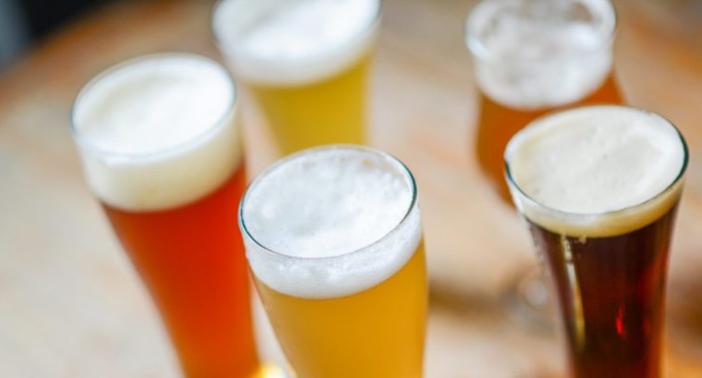Best sour beers have the right balance of acidity and sweetness. Sour beer has become increasingly popular in recent years.
For those who are not familiar with it, sour beer is a style of beer that has a tart or acidic flavor. It can range from light and refreshing to intense and complex.
Trying sour beer for the first time can seem intimidating. Still, once you delve into its complex flavor profiles and tantalizingly tart taste, it’s hard to deny that there’s something exceptional about these brews.

Learn more about the savory world of the tangy taste of sour beers and find out what kind suits your palate best.
What is Sour Beer?
American wild ale, often known as sour beer, is a type of beer that has an acidic flavor and a characteristic acidity.
The bacteria and wild yeast introduced throughout the fermentation process are to blame for this intricacy.
Making sour beer involves various factors, including brewing technique, souring bacteria, wild yeast, and storage container.
There are ENDLESS potential types and flavors of sour beer since sour ales can be aged in wooden barrels, blended with fruits, or infused with tropical hops.
What Are the Most Common Flavor Profiles of Best Sour Beers?
Sour beer has become increasingly popular in the craft beer scene for its unique flavor combination of sweet and tart.
While each brewery creates unique sour beer, you can look for familiar flavor profiles when trying different sour beer styles.
Let’s look at some of the most common flavor profiles of the best sour beers.
Berliner Weisse
Berliner Weisse is a classic German-style sour beer that dates back to the 16th century. It is light-bodied with an acidic sourness often balanced by fruit syrups like raspberry or woodruff. It’s low in alcohol content—usually around 2–3% ABV—which makes it an ideal summer refresher.
Gose
Gose is another classic style of German sour beer that dates back to the early 16th century. This style is brewed with malted barley, wheat, salt, and coriander for added complexity. Gose typically has a slightly salty character along with tart citrus notes such as lemon or lime. The ABV can range anywhere from 4–5%.
Lambic
Lambic beers are Belgian-style sour beers that have been spontaneously fermented using wild yeasts and bacteria found in the air around Brussels. This gives them a unique complexity beyond just sourness; they also have earthy funkiness, barnyard characteristics, and fruity notes like apple or pear.
Lambics can range from 4–7% ABV depending on the type of beer being made (fruit lambics are usually higher in alcohol). Lambics are one of the oldest styles of sour beer around. Since these yeasts are unpredictable, Lambics tend to be less consistent than other styles, but they make up for it with intense flavors like citrus zest or apple cider vinegar that can make your taste buds stand up and take notice!
Fruited Sours
Fruited sour beers are brewed with fruit juices or purees added during the brewing process, giving them a distinct sweet-tart flavor profile. Popular fruits used in these sours include raspberry, blueberry, peach, mango, and pineapple.
These beers tend to have a more pronounced sweetness than traditional sour beers but retain their tartness from using lactic acid bacteria during fermentation. Fruited sours can also be blended with other styles, such as lambics, or add additional complexity and depth of flavor.
The acids the fruit produces enhance the sour character while giving it complexity and depth of flavor. As a bonus, these beers often have subtle notes of vanilla or caramel from their fermentation process.
Sour IPAs & Pale Ales
Sour IPAs and pale ales have become increasingly popular as brewers experiment with new ways to incorporate sour beer into more traditional styles.
These beers use a combination of hops and lactic acid bacteria during fermentation, giving them a bright, citrusy aroma and a tart finish that pairs well with their hoppier character.
Some examples include American-style pale ales or IPAs brewed with lactobacillus or Brettanomyces yeast strains for an additional layer of complexity and depth of flavor.
Sour Wheat Beers
Sour wheat beers are another popular type of sour beer. These brews use wheat as their primary grain, which gives them a light body and refreshing taste.
They also have a distinct tartness from their lactic acid content, which is usually balanced out by some sweetness from the wheat malt used in brewing and subtle hints of spice from specialty hops used during fermentation.
Best Sour Beers You Should Try Out
Wild Little Thing
- Brewed by: Sierra Nevada
- From: California, USA
- ABV: 5.5%
The most popular beer at the sour beer brewery, Hazy Little Thing, serves as the backbone for the kettle sour ale known as Sierra Nevada Wild Little Thing. The ingredients of guava, hibiscus, and strawberry ingredients give it a fruity flavor. Cascade hops give this beer the perfect amount of pucker when added!
Sour Rosé
- Brewed by: Crooked Stave Artisan Beer Project
- From: Colorado, USA
- ABV: 4.5%
Everyone who enjoys rosé, listen up—we have something for you! The Sour Rosé is a wild ale that is unfiltered and fizzy with fruity sourness. The brew’s vibrant rose hue results from the blueberries and raspberries. For wine drinkers, this cross-genre beer is a style recognition! Its higher price point is a result of this niche market.
Beatification
- Brewed by: Russian River Brewing Co.
- From: California, USA
- ABV: 6%
Here is a fantastic sour beer recommendation from a top-tier American artisan brewery! One of Russian River’s Belgian-inspired wild ales, The Beatification, is their take on the Belgian lambic. The beer, which is 100% spontaneously fermented, ages for months in oak barrels.
Sour IPA
- Brewed by: New Belgium Brewing Company
- From: Colorado, USA
- ABV: 7%
Sour IPA is best for you if you enjoy hops. In addition, it is reasonably priced, making it our BEST BUDGET PICK. Thanks to the Citra and Amarillo hops used in this brew, this sour IPA has a HIT on its aromatics. It has a hazy appearance and exhibits vividly acidic, orange juice-like tropical flavors. Additionally, this particular beverage is generally available and simple to locate!
Madame R. Galle
- Brewed by: Fair Isle Brewing
- From: Washington, USA
- ABV: 6.2%
The BEST wild Saison exhibits all the characteristics Saison fans will be looking for but with the added slight sourness. It has restrained acidity with notes of lemon, stone fruit, and passion fruit. Of course, since it is derived from Saison, this refreshing beer has high carbonation.
What to Look for in Sour Beers
Ingredients
Before you purchase a sour beer, carefully read the label. A gose, Berliner Weisse, or fruited kettle sour will typically be more accessible than a beer fermented with Brettanomyces2, a wild yeast. It can provide more complex flavors for beginners who drink sour and wild beer.
Category
Not all sour beers are created equally. The Berliner Weisse is a classic low-ABV German wheat beer that is light in color, hazy, highly carbonated, and tartly pleasant.
The Flemish ale, often known as The Flanders, is a delicious red Belgian beer fermented in exposed oak vats. The Gose is a cloudy, top-fermented German beer with a salinity and herbaceous flavor that contains at least 50% malted wheat.
Lemon and coriander are common additions to the Gose. The Oud Bruin, another Belgian beer, has a fruity tartness, vinegar-like acidity, and a rich malt flavor.
The Lambic-style beer is crisp and has a high concentration of wheat in several flavors, such as cherry and raspberry.
How are Sour Beers Being Made?
Breweries purposefully add bad bacteria or wild yeast to beer, then watch as the microbes use their microscopic skills to add acidity and tartness. Saccharomyces, the most popular souring bacterium, is in charge of turning milk into yogurt.
Breweries also perform spontaneous fermentation by allowing ambient yeast to inoculate wort—the sweet grain liquid that becomes beer.
Read Next: The Benefits of Drinking Sour Beer, The Best Foods To Pair With Cold Beer and What Is The Reinheitsgebot?




